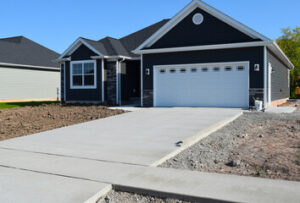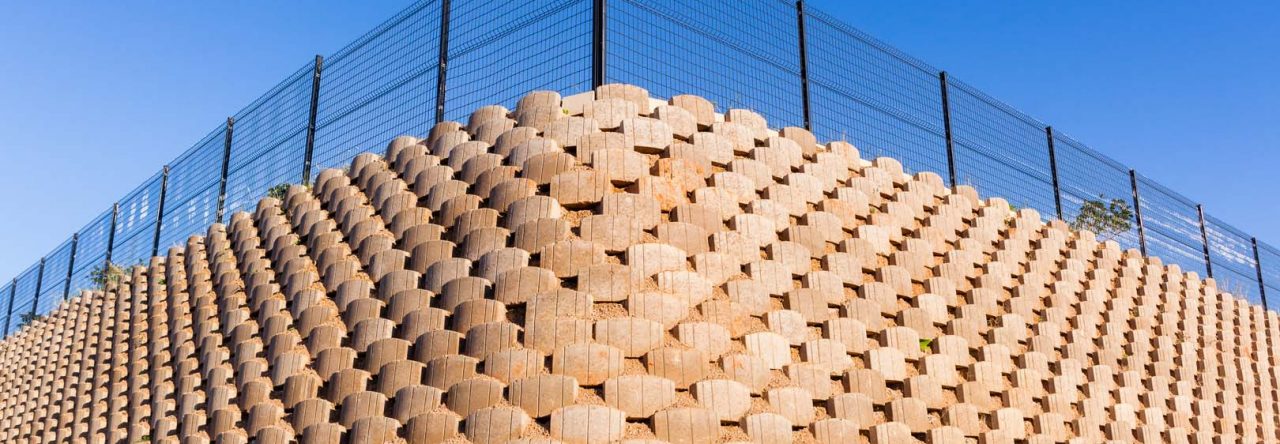The most popular choice for home driveways, concrete is durable, low-maintenance, and offers a long lifespan. It also adds curb appeal and can improve property value.

Concrete is poured over a base made of gravel or crushed rock. Adding roadbase stabilizes the soil before pouring and can be used in areas with soft or loose soils.
A concrete driveway is a great choice for homeowners who want a durable and low-maintenance surface. It’s also versatile enough to meet most landscaping needs and can complement any house’s exterior style and colors.
To install a concrete driveway, you need to prepare the ground and make sure it’s properly stable before pouring. First, remove grass and other vegetation from the area to create a flat, even surface to support your new driveway. Then, you’ll need to set up wood forms around the perimeter and add a base of Class-5 gravel.
Depending on the type of soil you have, the base may need to be as thick as 6 inches for solid rock or as little as 4 inches for loam and clay-based soils. Then, a layer of mesh or metal rebar is added just above the gravel to help with tensile and flexural strength.
Rebar is a more expensive option than mesh, but it can significantly increase the structural strength of your concrete. It can save you from a crooked or crumbling slab or if your driveway gets frequent delivery trucks or frost action.
If you live in a dry climate, you’ll probably need to water-cure your concrete for a couple of days before it’s ready to drive on. This will eliminate any standing water, which can cause the concrete to become soft and weak.
Next, a thick-bristled broom can be used to clean off the top layer of dirt and grime from your concrete surface. You’ll need to be sure to use a consistent stroke from one side of your driveway to the other, so you don’t get any uneven spots in your finish.
The next step is to cut control joints into the wet concrete at regular intervals for expansion grooves that allow the slab to shift and break evenly. Without control joints, the slab can easily fracture at random locations, which can cause a lot of damage and expense.
In addition to control joints, you’ll need to seal your concrete with a protective polyurethane or elastomeric coating. You’ll also need to apply a thin strip of insulation to the sides of your driveway, which will act as an expansion joint to allow stone and concrete to expand and contract naturally over time.
Concrete is a slurry of cement, gravel, and water that can be formed into many shapes, patterns, and colors. It’s a great option for driveways because it’s inexpensive and durable.
However, before pouring the concrete, it’s important to prepare the site. This may involve removing an existing surface or grading the area to ensure proper drainage.
Next, the site must be leveled, and a layer of gravel must be brought in as a base for the concrete to sit upon. A solid, stable base is essential to prevent cracking and crumbling.
Depending on the climate and your soil conditions, you’ll need 4 to 6 inches of a compactable base for a concrete driveway. If the site has heavy clay or organic soil, you’ll need to increase the depth of your base.
A driveway typically needs to be 4 inches thick for a standard passenger car and 5 inches thick for a vehicle with heavier wheels. It should be sloping towards the street at a minimum of one percent for proper drainage.
When you’re pouring a concrete driveway, it’s important to use a trowel that’s designed for smooth finishes. You’ll want a trowel that has a smooth head and is long enough to reach two sides of the concrete form.
You’ll also want to use a scraper, which is shaped like a bull’s eye and will help you create edges and corners in the driveway. A bull float will also be useful, although it’s not as effective as a trowel at smoothing the surface of the concrete.
